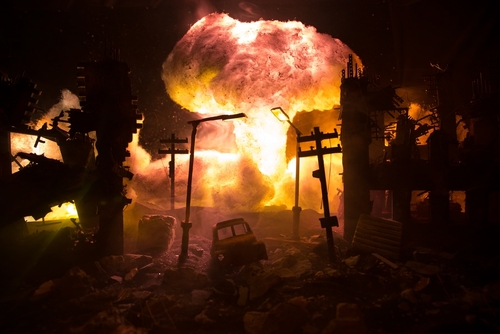
In a chilling development that has sent ripples across the international community, North Korean leader Kim Jong Un has issued a stark warning to the United States, stating his readiness to launch a nuclear attack should he perceive any provocation. This alarming statement comes amid heightened tensions following a series of military maneuvers by both North Korea and the United States and its allies.
Kim’s ominous threat was made public just after a significant meeting in Washington between South Korean and American officials, where discussions centered around bolstering nuclear deterrence against potential conflicts with the North. The timing of Kim’s declaration is seen as a direct response to the strategic dialogue between the two nations, underscoring the volatile nature of the current geopolitical climate.
🇰🇵 North Korean leader Kim Jong Un has warned that official Pyongyang will not hesitate to launch a nuclear attack if the enemy provokes it with nuclear weapons.
Kim explained that such decisive military activities are carried out to demonstrate an offensive counterstrike… pic.twitter.com/9HILWn5jzQ
— S p r i n t e r (@Sprinter99800) December 21, 2023
The North Korean regime has been unyielding in its pursuit of nuclear capabilities, with Kim Jong Un announcing earlier this year plans to exponentially expand the nation’s nuclear arsenal. This includes mass production of tactical nuclear weapons and the development of new missile systems capable of delivering these warheads, such as the Hwasong-18 intercontinental ballistic missile (ICBM), which has the range to reach the U.S. mainland.
Recent actions by North Korea have only served to exacerbate the situation. The launch of the Hwasong-18 ICBM, described by Pyongyang as a “warning counter-measure” against perceived military threats from the U.S. and its allies, was a demonstration of the country’s advanced missile capabilities. The presence of Kim’s daughter at the test launch was a symbolic gesture, reinforcing the regime’s commitment to its nuclear program.
North Korea's Kim Jong Un:
If our national security is threatened, we will launch a Nuclear attack. pic.twitter.com/dkFs2tF75T
— Globe Eye News (@GlobeEyeNews) December 21, 2023
The United States, South Korea, and Japan have not remained idle in the face of these provocations. They have increased defense cooperation and activated systems to share real-time data on North Korean missile launches. Moreover, the recent arrival of a U.S. nuclear-powered submarine in South Korea and joint drills involving long-range bombers have signaled a united front against North Korean aggression.
Pyongyang has been clear in its stance, declaring that the Korean peninsula is effectively in a state of war and identifying U.S. strategic assets in South Korea as primary targets for destruction. This rhetoric has been matched by equally strong language from Seoul’s defense minister, who warned of severe consequences should North Korea engage in reckless actions.
The historical context of these threats is not to be overlooked. In 2017, North Korea threatened a nuclear strike on the heart of the U.S. if there were any signs of an attempt to remove Kim Jong Un from power. More recently, Kim Yo Jong, the influential sister of Kim Jong Un, reiterated that the North would not hesitate to use nuclear weapons if attacked by South Korea.
Analysts estimate that North Korea may possess a substantial number of nuclear weapons, with continued production of uranium and plutonium for warheads likely ongoing. Despite not having tested a nuclear weapon since 2017, the North’s capability to inflict significant damage should not be underestimated.
The international community must remain vigilant and unified in the face of North Korea’s nuclear brinkmanship. Diplomatic efforts must continue to de-escalate tensions and prevent the unthinkable—a nuclear confrontation. The stakes could not be higher, and the world watches with bated breath as the situation unfolds on the Korean peninsula.













